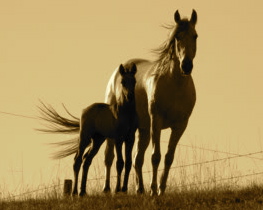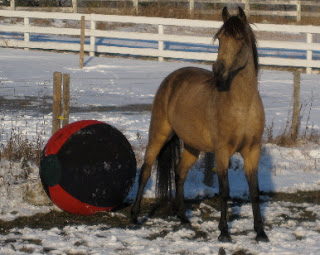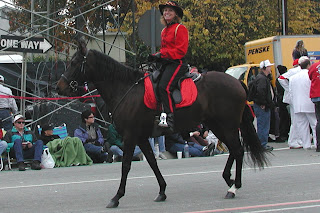Thursday, December 30, 2010
Enya do Summerwind born - last Mangalarga Marchador of 2010!
Saturday, December 25, 2010
Friday, December 24, 2010
Mangalarga Marchador - A Breed Without Frontiers
 |
| Nomade de Clarion, MM stallion in Brasil |
| Xingera do Krieswald in the Netherlands |
 |
| Beethoven do Summerwind, one of 5 MMs now in Canada. |
 |
| Caboclo da Piedade and Seamus da Boa Fe in the US. |
 |
| Patek de Maripa, MM stallion exported to Europe for breeding and expos like EQUITANA 2011 |
Thursday, December 16, 2010
Sensation saddles - the name fits!
 |
| G3 Hybrid with Dressage flaps |
 |
| Harmony Element with English flaps |
| Westlish Rebel |
 |
| Western Sport Trail |
Sunday, December 12, 2010
Vicosa is a grandma!
| Amethyst do Summerwind as a foal in AZ |
 |
| Amy at 15 months before she was sold to MI. |
Sire is Oxum do Vale da Prata, a black Mangalarga Marchador stallion, also imported from Brasil. The foal is bay with 2 hind socks.
Congratulations, Jay and Susan! and Amy too!
Vicosa is now in MT, owned by Rox Rogers, Haras Cayuse.
 |
| Vedete de Itajoana and foal |
Monday, November 29, 2010
A Christmas Story
Saturday, October 23, 2010
Spooking - Tips and Comments welcome!
 |
| Azenha de Maripa, one-rein stop practice at a canter |
| Koyote Libertas, because he trusts me, he often checks in with me when he see something scary. |
Thursday, October 14, 2010
Finding Seamus - a story of gait
 |
| Seamus da Boa Fe, imported in-utero, grandson of Malibu da Santa Terezinha. |
 |
| He loves to be picked! |
 |
| Young Seamus |
 |
| Seamus doing Spanish Walk at the Fiesta of the Spanish Horse |
§ Speed for batida. Almost a canter, but right at the moment that he will transition, I say no, this is the speed.
§ Uphill work.
§ “ALLOW” the gait to happen. When he is gaiting along, I leave him alone and let him know this feels good and is right.
Lynn and Seamus this summer in Pagosa. |
 |
| He's very athletic and talented! |
| Koyote Libertas, ridden by Felipe Ribeiro, our marcha batida standard. |
Thursday, October 7, 2010
Our new handout - Isn't this cool?
http://www.summerwindmarchadors.com/news.aspx
Click on the 10/082010 post and then inside, click on the pdf file symbol.
Be sure to visit her magazine and website too!
www.goinggaited.com
Sunday, September 19, 2010
New article in GOING GAITED
Summerwind has been granted an import permit to bring in Brasilian frozen semen! The long-awaited result of a four year effort may be about to arrive. Watch for more news later this month or early next month.
 |
| Stallions from Haras Maripa, the farm providing the first semen in the shipment. |
AND, Check it out! A breed profile on the Mangalarga Marchador is in the latest issue on Going Gaited.
http://www.goinggaited.com/aBreedSpotlight.html
Monday, August 23, 2010
August Newsletter
In the article about speed in the gait, here is the video to watch. Enjoy!http://www.youtube.com/profile?user=FazendadasAguasJM#p/u/15/t_JpcRVVQho
Thursday, July 29, 2010
Today's Horse Trader Highlights Marchadors!
2010 ABCCMM Inspection Visit and Bacara
 photos: Jeff Bosley on Bossa Nova de Miami, Bacara's mom and yearling Bacara do Summerwind that Jeff fell for 3 years ago.
photos: Jeff Bosley on Bossa Nova de Miami, Bacara's mom and yearling Bacara do Summerwind that Jeff fell for 3 years ago.
In August 2010, Dr. Getulio Vieira will be again visiting the US to inspect and approve the US born Marchadors for dual registry with the ABCCMM – the Brasilian MM association. Jeff and Michelle Bosley have chosen to continue tradition with their mare Bacara do Summerwind (Caboclo da Piedade x Bossa Nova de Miami)
The ABCCMM’s inspection process is one of the cornerstones to the quality of the breed. Horses are inspected by the ABCCMM technicians when they reach age 3 (or later) – for conformation, for gait and for temperament. The Mangalarga Marchador is an unusual breed of horse with traits that have been carefully cultivated for generations. When a breed of horse has specific traits that are highly desirable and unique to that breed, then protecting it from indiscriminate or random breeding practices is wise. The purpose of the ABCCMM inspection is to make sure the animals that are registered and used for breeding purposes satisfy the clearly defined and developed breed standard.
Thursday, May 27, 2010

Given a choice, my next dog will also be a border collie, like our wonderdog, Mac. I love the breed – their intelligence, spirit, pure joy and beauty when they are running. Wait – that description could also fit a Marchador!
Like dogs, there are now too many horses in the U.S. It’s a problem. But while I donate to some of the rescue efforts, I would not want a different breed of horse, even for a good cause or for free. And now having raised horses from birth, that is the way to go for me. I breed Marchadors because they possess all of the characteristics that I value in a horse. They are what I want to own, ride and spend time with.
It isn’t all about the breeders; it’s also about the owners. Both produce unwanted horses. I make a commitment to SW horses. We find a new home, sell it for you or even sometimes buy it ourselves if you can no longer keep it. My dream would be for every horse to find a forever home.
Marchador Trivia

The USMMA with the help of all the importers will be writing our history and stories soon in the USMMA newsletter, perhaps to be published in a book too. Tresa Smith is heading up the tremendous effort. Here are some of the numbers to whet your appetite.
69 Marchadors have been imported from Brasil. Of the 69 imports:
1 had to be returned to Brasil when he failed testing in Miami
4 have died since being imported (only one from old age)
The oldest import is a mare born in 1982 - Formosa do Crocoto.
26 were stud colts or stallions. Of these, only 11 are still breeding.
37 mares were imported to become foundation breeding mares in 11 states with 14 breeders.
5 horses were imported as geldings.
The importers:
The Guerra family in FL – MM Horse Farms. Regal Legacy Farm, out of business, in CA, GA and OH Tresa Smith in MT – Lazy T Ranch and Montana Marchadors Premier International, out of business, in FL and CA John and Lynn Kelley in AZ, Summerwind Marchadors Susan Gabriel in CA, Dreamcatcher Ranch Rick and Liz Schatz in OK, Flying Oaks Ranch Holm and Susan Neumann in OR, Cascade Marchadors Keith Mosing in TX Peter and Lori Silcher in MT, 4 Seasons Marchadores
The foundation horses represented a great mix of bloodlines. Abaiba, Tabatinga, Favacho, Bela Cruz, Herdade, JB, Traituba, Caxambu and more. Some of the imported mares were pregnant to Brasilian stallions further adding to the genetic pool if they remained breeding animals. All of the other Marchadors found around the country are products of these original horses.




